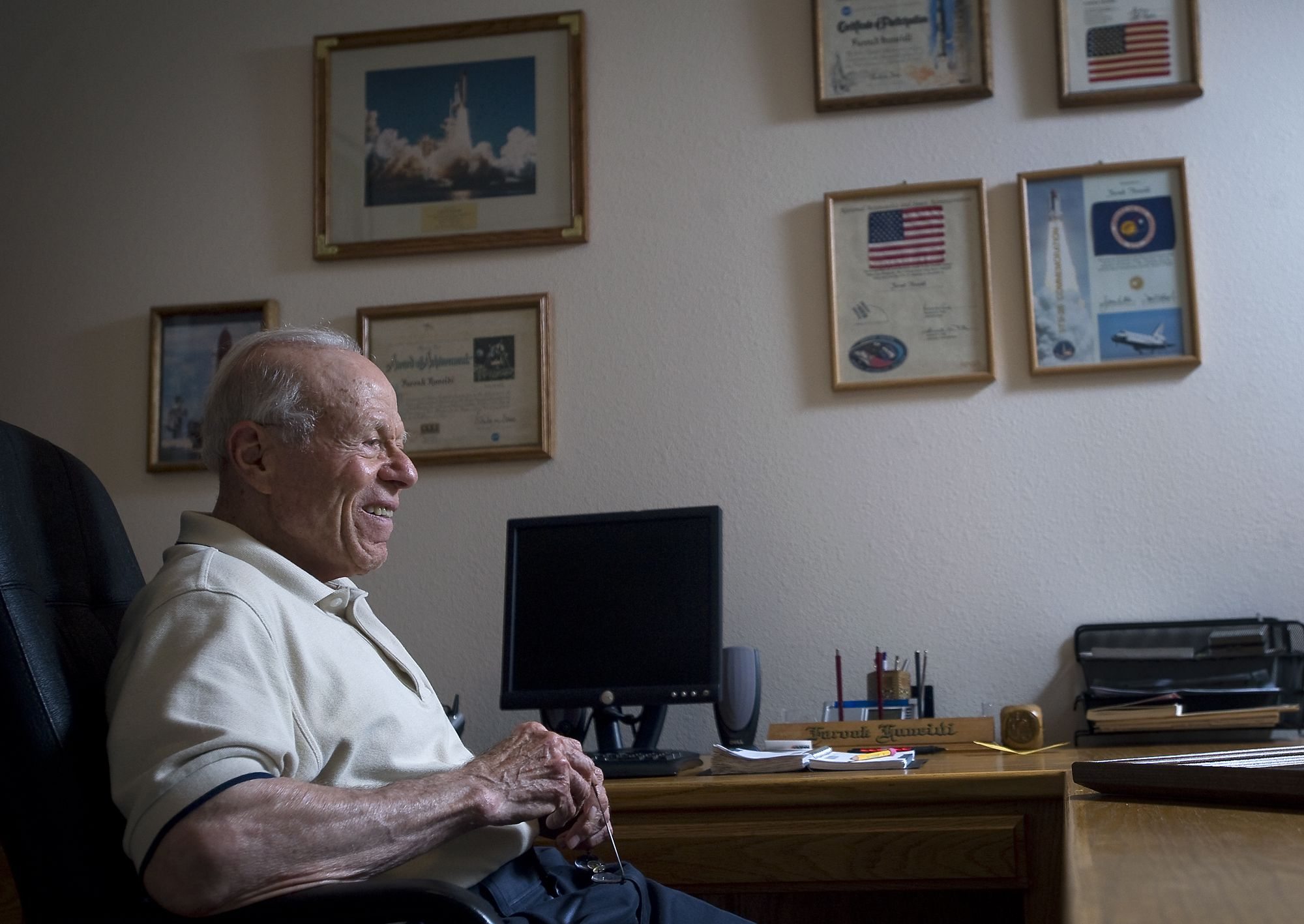Images and keepsakes in Farouk Huneidi’s office reflect four decades of America’s space program.
The program is on pause for a while, after the final space shuttle flight returned Thursday morning to Earth. But the retired NASA engineer can look at the wall next to his desk for reminders of just how far we’ve come.
Inside a frame, there is a small American flag that was aboard Columbia during the very first shuttle flight — STS 1 — in 1981.
A similar flag went into space in 1990 when the Discovery crew deployed the Hubble space telescope.
A framed photograph of a Challenger launch notes Huneidi’s role in the investigation following the1986 accident that killed seven crew members.
Huneidi received another framed photograph for his role in the “Return to Flight” mission in 1988, when Discovery made the first launch following that Challenger disaster.
That’s just a brief portion of space history represented in Farouk and Janette Huneidi’s Salmon Creek home. Two certificates of appreciation on his wall are signed by Huneidi’s first boss — Wernher von Braun, who helped develop the V-2 rockets that killed more than 2,500 people in England during World War II.
U.S. forces whisked von Braun away after the war and the German rocket expert became director of the Marshall Space Flight Center in Huntsville, Ala.
And several photos of shuttle launches show one of Huneidi’s indelible contributions to the space program, starting with the third shuttle launch and continuing right up to the final shuttle launch on July 8.
He’s the reason the external fuel tanks — the big orange structures that dwarfed the actually shuttle vehicles — were orange.
For the first two missions, those tanks were painted white, he said. But Huneidi told NASA officials that the paint didn’t offer any protection for the orange spray-on foam that insulated each 530,000-gallon fuel tank.
NASA could shave 600 pounds off the weight of the tank by not painting them.
There is a plaque that recognizes Huneidi’s work on the Saturn 5 rocket that put Neil Armstrong on the moon in 1969, and a charred piece of heat shield that went to the moon and back.
Looking back recently at his contribution to manned space flight, Huneidi selected one word to summarize his 32-year career.
“Amazing,” the retired thermal engineer said. “Sometimes you’re lucky” to wind up in a job.
Of course, a trip into space would have been pretty good, too.
“Yes,” Huneidi (pronounced hoo-NAY-dee) acknowledged. “I wished that I could go. But my eyesight wasn’t good enough. Astronauts go through a lot of work, and I couldn’t do it.”
Every once in a while, Huneidi was part of a team that shared a little bit of the risk the astronauts faced.
“We did pre-launch checkouts,” he said.
“Our team, the astronauts, and the team that dressed the astronauts were the only people who got to be on the launching pad,” he said.
By way of explaining the risk factor, he showed a vintage photograph of four men, dressed in orange flame-resistant coveralls. Huneidi was the one with the big number 6 on his back.
“If something happened, the number would make it easier to identify you,” Huneidi said.
Don Lips is another retired engineer who played a role in developing the shuttle. Now a part-time Ridgefield resident, he worked for a California company that made flight indicators for shuttles.
“When it took off and landed, they measured the altitude and air speed. I did those sensors,” Lips said.
The shuttle program was capped by its role in building the International Space Station, which NASA calls the most complex engineering and construction project in the world.
“I think it was a real milestone in society,” Lips said of the American space program.
Now it’s in a downward spiral.
“We have friends whose children now are engineers at Huntsville and Kennedy,” Janette Huneidi said.
NASA already is cutting a lot of those jobs, with more layoffs on the way.
“We will lose a lot of brain power,” she said.
But the Huneidis, who moved to Vancouver in 1995 after Farouk’s retirement, have seen ebbs and flows before.
“In the 1960s and early ’70s, there would be a lull between programs,” Janette Huneidi said. “We’d invite guys in the program over for dinner, and they would say, ‘What will we do? This is coming to an end.’
“We will go on,” she said.
Tom Vogt: 360-735-4558 or tom.vogt@columbian.com.




